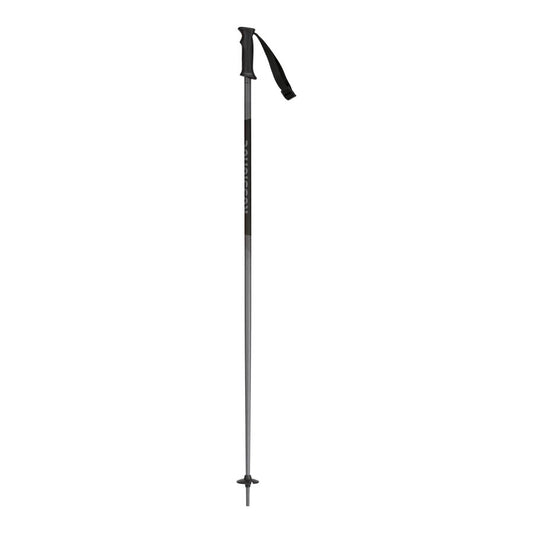

The most basic and common ski pole material for kids poles and beginner level ski poles. The aluminum material makes them heavier than other pole materials we discuss below, but that also makes them more friendly to your pocketbook. If you’re new to the sport or just a casual skier who isn’t looking to break the bank you will find plenty of options here.
If you’re looking for something that is a little bit lighter (to reduce fatigue during a day of skiing) but something that won’t burn a hole in your wallet, ski poles made of a higher-grade aluminum will fit the bill. They are very durable but will be stiffer than composite or carbon material ski poles.
Just shy of the “advanced and expert” level poles that you find in the carbon category, Composite material ski poles are flexible, durable, and lighter than the standard or high-grade aluminum material poles. This greatly reduces extra fatigue during your endless runs during your days of skiing.
The top-end of the ski pole market presents you with many Carbon material options. These are mostly geared towards skiers with advanced skill sets who can ski pretty much anything. They have a tremendously high strength-to-weight ratio while maintaining the lightest feel possible.

The most widely found, and used type of ski pole. All-Mountain ski poles are made from the most basic aluminum all the way up to high-end carbon fiber. All-Mountain ski poles are intended for skiers of all ages and skiing abilities.

For the park and pipe rider, Freestyle ski poles are ideal. Freestyle poles are shorter than traditional All-Mountain style poles giving you increased mobility and maneuverability, and makes those dope grabs that much easier.

As is the case with race skis, race boots, and race bindings, Race ski poles are for the speed seeker. They are constructed of the best, lightest, and most durable materials, and tested vigorously to maximize speed.

When it comes to ski poles you are going to encounter two styles of “baskets” when shopping ski poles, Standard and Powder. Standard ski pole baskets are smaller in size (diameter) than Powder baskets. They are very light and are intended to limit how deep your pole can sink into the snow.
On the flip side of the Standard basket type is Powder. Powder baskets are larger in size (diameter) than Standard baskets. They are designed to prevent your ski pole from sinking too far into that fluffy, powder snow.
While there are ski poles that are designed specifically for women, unless it is specifically designated as a women’s ski pole, most ski poles that aren’t for kids are going to be adult/unisex ski poles. Women’s specific ski poles will vary from adult/unisex ski poles most notably in the grip as they will most commonly be designed with smaller grips to accommodate smaller hands.




When it comes to ski poles for kids it is not uncommon to come across two versions. One version is the standard type ski pole that simply features a smaller grip for kids’ hands, but the sizing is one size. A second version features the same smaller grips for kids, but is adjustable in size so it can grow as your young skier does, allowing you to get a few seasons out of a set of poles as opposed to getting new ones more frequently.